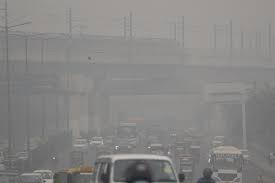Air quality in India’s capital remained in the “very poor” category on Monday, with the Air Quality Index (AQI) hovering above 350, according to data from the Central Pollution Control Board (CPCB). Thick smog blanketed much of the National Capital Region (NCR), despite ongoing anti-pollution measures by authorities.
Pollution Persists Despite Government Measures
The India Meteorological Department (IMD) reported an average AQI reading of around 319, confirming that air pollution levels remain dangerously high. The haze, caused by a combination of vehicular emissions, industrial smoke, and stubble burning in neighboring states, has led to visibility drops and widespread respiratory health warnings.
Authorities have reimposed Stage III restrictions under the Graded Response Action Plan (GRAP), which include curbs on construction work, bans on diesel generators, and advisories to limit outdoor activity.
Weather Conditions Worsen Air Quality
“Calm winds and low temperatures are trapping pollutants close to the surface,” said an IMD scientist. “Unless we see a significant change in weather patterns, conditions are unlikely to improve soon.”
Delhi Chief Minister Arvind Kejriwal reiterated the government’s appeal for residents to use public transport and avoid burning waste, while schools have been instructed to limit outdoor activities for children.
Seasonal Trends and Health Concerns
Air quality typically worsens in northern India during late October and November, as farm fires in Punjab and Haryana coincide with cool, stagnant air, creating a seasonal toxic haze. Health experts warn that prolonged exposure can aggravate asthma, bronchitis, and cardiovascular diseases.

